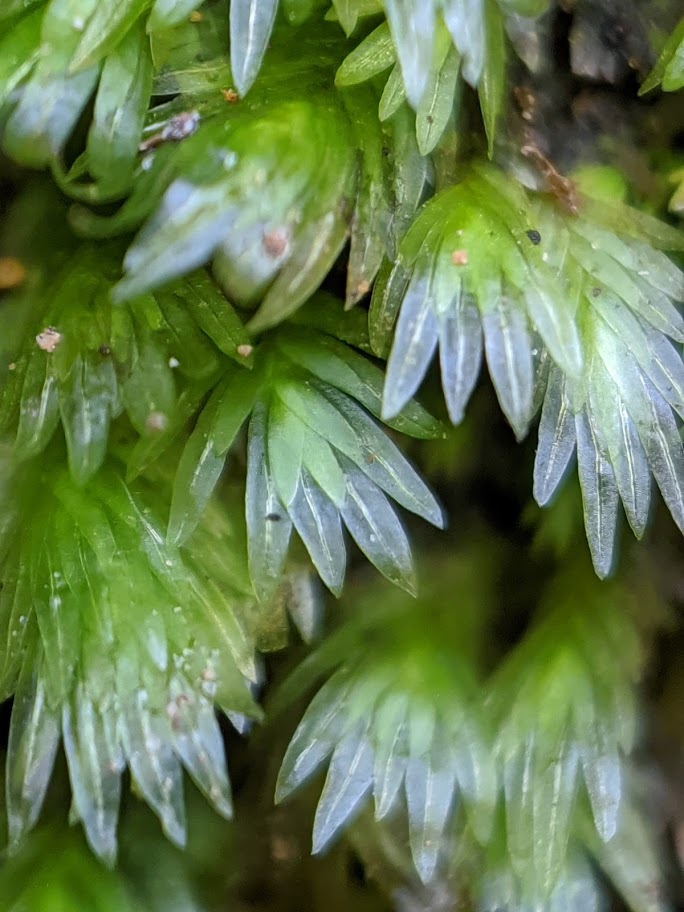Fissidens pallidus var. pallidus
Asexual propagules absent. Tufts or gregarious stems on soil. Stems 5–20 mm long, occasionally branched, central strand present, with rhizoids restricted to stem base. Leaves linear-lanceolate, apex circinately revolute when dry, 1.5–3 mm long, flat; costa ending 3–6 cells below apex; apex acute. Apical and dorsal laminae entire to slightly serrulate or denticulate near apex, without a border; cells ±isodiametric, irregularly rounded hexagonal, 9–25 μm wide, smooth. Vaginant laminae 1/2–2/3 leaf length, half closed, without a border. Dioicous. Seta 3–8 mm long, orange-brown. Capsule elliptic, horizontal, curved; theca 1–1.3 mm long. Calyptra smooth, mitrate. Operculum rostrate from a conic base, 1–1.3 mm long. Peristome teeth bifid.
GipP, OtP, GGr, NIS, EGL, EGU, WPro, HSF, HNF, OtR, Strz, HFE. Mostly in higher rainfall areas (Otways, Yarra Ranges, Strzelecki Range, Wilson Promontory and East Gippsland) in moist areas in sclerophyll forest such as along creeks, near waterfalls and below boulders, and in rainforest. Also QLD, NSW and Tas. New Zealand.
 Spinning
Spinning
